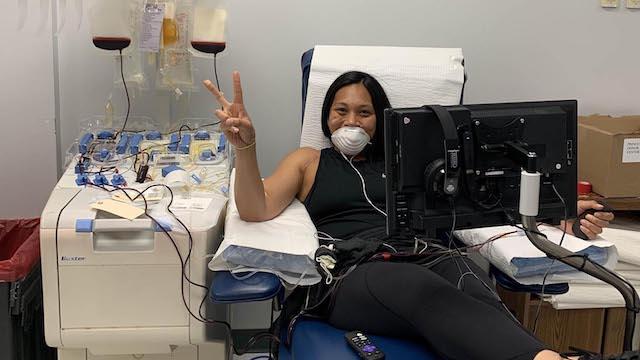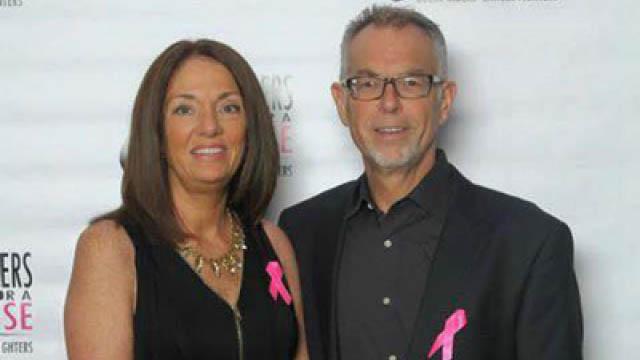By Krystal Ladao
A look into what it's like to have the coronavirus:
Friday, March 13th was an odd day. There was an uneasiness in the air as my department was working on preparing our documentation to work from home starting Monday. No one knew that it was going to be the last day we would be in the office for a while.
My weekend went as it normally would. I went to the gym in the morning, saw my friends, and went food shopping for the week. The shelves were fully stocked with the essentials like bread, milk, and eggs. So, I picked up what I needed, and life continued as usual.
March 16th was my first official day, telecommuting from home. It was a beautiful sunny day, and afterward I went outside to do a quick workout. As the day wore on, my allergies started to kick in. Sneezing and runny nose should be gone in a day or so.
On March 18th, I realized something wasn't right, and what I was feeling definitely wasn't allergies. I first noticed that I was extremely sore from my working out the past two days. They weren't intense by any means, but I felt like I got hit by a Mac truck. I started feeling warm and noticed the onset of a sore throat. I put my issues aside since my fiancé was also sick and having some GI issues that day too. Our primary doctor wasn't in that day, so we went to our local urgent care. They took our temperatures, told us we were fine and sent us off on our merry way.
The next day I woke up feeling miserable. I was burning up and EVERYTHING HURT! My body was still achy, my voice was becoming horse, and I started to cough a lot. I received a text from my friend whom I saw the past weekend and told me he just tested positive for the coronavirus. It all started to make sense now. I called my primary doctor and told them that I was in contact with someone who tested positive. The drive through testing sites wasn't set up yet, so they recommended that I reach out to a clinic in North Jersey that was doing testing.
On Friday, March 20th I had the first appointment that morning at Valley Medical Group in Wayne. We pulled up to the back of the building, where they made you wait until the nurse came out to take you in. They took two samples from me, one for COVID-19 and another for any other strains. Though the images that we see on TV might look like a quick and straightforward nasal swab, it actually hurts. After the swab, there is this deep burning sensation that took almost 20 minutes to go away. The nurses informed us that the labs were backed up and would take a week to get back our results. As a precautionary measure, the nurse prescribed us albuterol but told us to go immediately to the hospital if we experience a shortness of breath. Lastly, they told us we would need to self-isolate for 14 days.
After that day, it was a blur. I slept for days on end, and when I was up, I just wanted to go back to bed. Small movements, like walking to the kitchen, were physically draining. One night I
collapsed on the bathroom floor and did not have the strength to get up. I began to notice that I lost my sense of smell, taste, and appetite. When I tried to eat, there was nothing just the texture of the food.
The worst part was the extreme chills and night sweats that lasted for four days. Out of nowhere, my body would be freezing, and all the blankets and layers couldn't warm me up. Then while I slept, it was the total opposite. I felt like my body was on fire. Yet my biggest fear was my cough, which was getting progressively worse. I would experience coughing fits that wouldn't end and feared that my symptoms would worsen and land me in the hospital.
After a week and a half, I gradually started to feel better. The symptoms would subside, and I was able to taste food again. It took a week to get our test results back. We received confirmation that both my fiancé and I tested positive for the coronavirus. I speculated that I had it, but it was reassuring to know for sure. Over the following weeks, we received numerous calls from nurses and our township asking about how we were and checking if we have recovered or not.
During my daily Facebook scroll, I came upon an article about a need for plasma donations from COVID survivors. I immediately signed up to donate with the American Red Cross, Mt. Sinai, and Hackensack Meridian. It was three weeks later, until I received a response from the Red Cross. Though I thought it was a long time to wait to hear back from them, I was told that to qualify you to have to be three weeks out since your last symptoms. The Red Cross signed me up for the earliest plasma donation they had at their Princeton location.
Like many people, I had no idea what a plasma donation entails or how it will be used to help against the coronavirus. In a convalescent plasma donation, they take your blood and separate the plasma, which is rich in antibodies. The plasma will be used to treat patients who are critically ill from the virus and hopefully give them the boost to recover. The whole plasma process is much longer than your regular blood donation. On average, it lasts 2 hours, not including the pre-screening. Though it seems like a long time to sit there, they give you a personal TV to watch Netflix to pass the time.
I have a low tolerance for physical pain and was extremely nervous. While the tech was inserting the needle, I flinched, and my right arm was unable to use. Fortunately, they can do a single-arm extraction as well, but this was our last chance to do it. I felt embarrassed as the tech had to throw out the kit that was used and retrieve a new one. While waiting for the tech to reset the machine, another person sat down in the chair next to me to donate plasma. He was a doctor at the local hospital who just came off of his shift to donate. The heroism of people astounds me every day. At that point, my fears were replaced with a resolve to be stronger. As the needle pierced my arm, I kept thinking of the doctor next to me. While in the chair, you continuously have to squeeze a stress ball. Which, after 2 hours, gets really tiring on your forearm.
I was intrigued watching the machine take my blood, separate the plasma out, and return the blood back mixed in with saline. My tech took the time to explain to me how the machine worked and told me that in addition to the plasma, I was donating platelets that would be used to help cancer patients as well! After 2 hours, I filled up two bags of plasma that will hopefully be used to help those not strong enough to fight the coronavirus. I thanked the staff for all their hard work and left feeling grateful for the opportunity.
In the grand scheme of things, I am thankful that my brush with the virus was minor compared to the thousands who have lost their lives and are still fighting. If you or someone you know are able to donate please visit the American Red Cross to learn how you can help!

